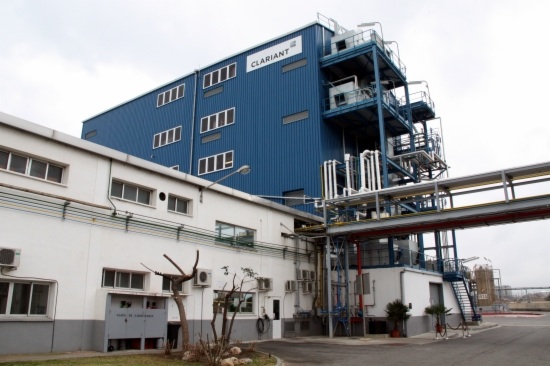Catalonia received 52% of the total industrial foreign investment in Spain
The Catalan industrial sector received €1.365 billion of direct foreign investment in 2013, the highest amount since 2005, according to Barcelona’s Chamber of Commerce. This represents 52% of the total foreign investment in Spain’s industrial sector in 2013, while Catalonia represents around 19% of Spanish GDP. Across all sectors Catalonia received a total of €3.51 billion of foreign investment last year, 31% more than in 2012. In addition, the President of the Chamber, Miquel Valls, emphasized that foreign investment in Catalonia went mostly to the industrial sector and advanced services, while in the rest of Spain it mostly went to the recreational and real estate sectors. According to Valls, this indicates that international investors have identified Catalonia with “a new production model”, while this has not happened in the rest of Spain.

Barcelona (ACN).- The Catalan industrial sector received €1.365 billion of direct foreign investment in 2013, the highest amount since 2005, according to a study published by Barcelona’s Chamber of Commerce on Thursday. This represents 52% of the total foreign investment in Spain’s industrial sector in 2013, while Catalonia represents around 19% of the Spanish GDP and some 16% of the population. Across all sectors Catalonia received €3.51 billion of direct foreign investment in 2013, 31% more than in 2012. In addition, the President of the Chamber, Miquel Valls, emphasized that foreign investment in Catalonia went mostly to the industrial sector and advanced services in technology, while most of the foreign investment in the rest of Spain went to the recreational and real estate sectors. According to Valls, this indicates that international investors have identified Catalonia with “a new production model”, while in the rest of Spain the “old economic model”, in place before the financial crisis, is being reproduced once again. These figures confirm that Catalonia’s self-determination process is not an important obstacle to attracting foreign investment. On the contrary, it is probably neutral or it might even have put Catalonia on the map and helped international investors to get to know its assets and specificities.
Ramon Rovira, Head of Studies at Barcelona’s Chamber of Commerce, particularly emphasised the €1.365 billion that the Catalan industrial sector received in 2013. This is the highest amount since 2005, when foreign investment in Catalonia’s industry reached €1.46 billion. Rovira pointed out that the 2013 figure is not so exceptional taking into account the trends of foreign investment going to Catalonia’s industry in the last few years. Catalan industry has attracted more than €1 billion of direct foreign investment every year since 2010: 1.22 in 2010, 1.08 in 2011, 1.21 in 2012 and 1.37 in 2013.
Investments went to the chemical, automotive, agri-food, textile, pharmaceutical and metallurgical sectors, among others. However, the chemical and pharmaceutical sectors come first in attracting foreign capital, followed by the telecommunications and ICT sector, as well as the automotive industry and the wholesale sector.
Catalonia is changing its production model, according to Valls
The President of the Chamber of Commerce highlighted the fact that having foreign investment tracking sectors with a high added-value and where technology plays an essential role points towards a change in Catalonia’s production model. The main beneficiaries of foreign investment would indicate “an extraordinary change of production model”, according to Rovira. He explained that this trend can be observed over the last four years and therefore the change is entering a consolidation phase.
However, while in Catalonia the economy is moving towards new and innovative paths, in the rest of Spain it seems that the “old model” based on the real estate, construction, leisure, insurance and financial sectors is back, according to Rovira and Valls. The Chamber’s President sounded a warning that Spain’s economy is “reproducing the past model”, which was based on speculation and created dysfunctional bubbles that collapsed with the 2008 financial crisis.
Catalan industry leads economic recovery in Spain
In addition, the Chamber of Commerce explained that the industrial sector is behind Catalonia’s economic recovery because in 2013 it was the only main sector that posted a positive growth, increasing by 0.8% on 2012 figures. Meanwhile, the service sector decreased by 0.3%, agriculture by 1.9% and construction by 7.9%.
On top of this, Catalonia’s industry was the only secondary sector with positive growth in Spain. In the Madrid Region, industry fell by 2.9% in 2013 and in the Basque Country it decreased by 1.3%, for instance. In Catalonia it grew by 0.8% while the Spanish average was -0.9%.
Valls stressed that all these figures are sending “three clear messages”. Firstly, Catalan industry is the sector leading the economic recovery in Catalonia and in Spain. Secondly, that industrial foreign investment chooses Catalonia, since 52% of all the foreign investment allocated in Spain’s industry sector went to Catalonia. And thirdly, foreign investment in Catalonia goes to highly-added-value activities, which indicates a deep change in the Catalan production model.